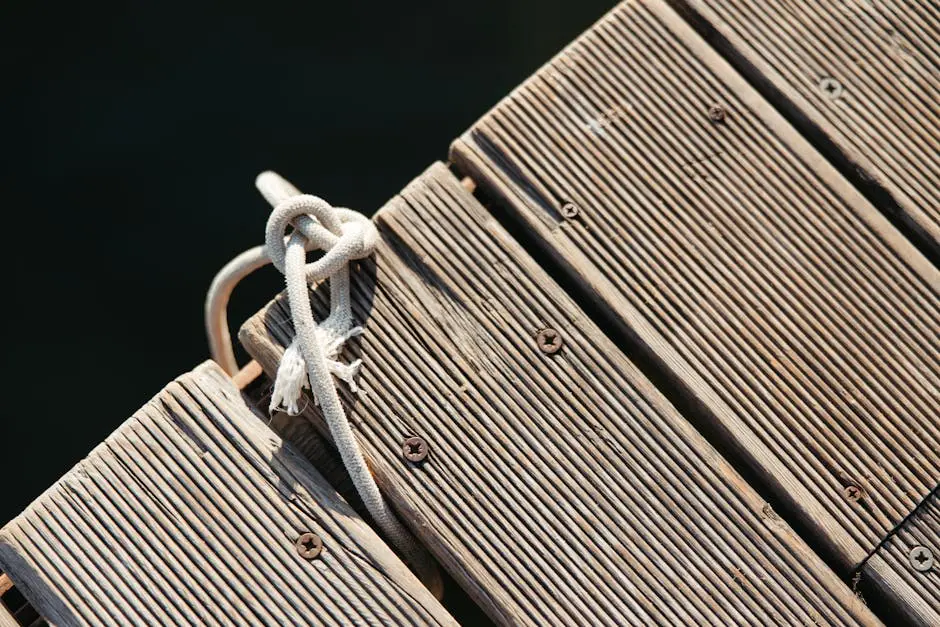
How Do You Choose the Right Size and Material for Dock Lines?
Choosing the right size and material for dock lines is essential for ensuring the safety and stability of your boat at the dock. In this FAQ, we will break down the key considerations to help you make an informed decision.
Step 1: Determine the Size Needed
Calculate the length and diameter of dock lines based on your boat’s size and the environment in which you’ll be docking.
Start by considering the type and size of your boat. For instance, larger vessels often require longer and thicker dock lines to provide adequate holding power. A general rule of thumb is to choose a line that’s at least 1.5 times the height of the dock, ensuring that you have enough length to accommodate tides and potential surges.
Additionally, think about the docking environment. If you’re docking in a busy marina where waves and currents are frequent, opt for longer lines that give you more flexibility. Remember, too, that weather conditions can change quickly, and extra length can be a lifesaver during unexpected situations.
Also, consider using multiple lines instead of just one. This redundancy can significantly enhance your boat’s stability while tied to the dock, especially during stormy weather or high wind conditions.
Step 2: Choose the Right Material
Select materials such as nylon or polyester that offer the strength and durability you require.
Nylon is a popular choice given its excellent elasticity. This feature allows it to absorb shock loads, which can be especially helpful if your boat gets rocked by waves or wakes from passing vessels. Its strong resistance to wear and tear makes nylon ideal for long-term use in varying conditions.
On the other hand, polyester has less stretch and provides a tighter line, which can be advantageous if you prefer a more controlled docking arrangement. Its high UV resistance also means it will last longer in sunny conditions, maintaining its integrity over time.
Choosing the right material ultimately depends on your specific boating activities. If you’re out in sun and sea often, you might want to prioritize durability over stretch, while occasional boaters may lean toward the elasticity of nylon for peace of mind.
Step 3: Consider Usage Conditions
Assess environmental factors like weather and tide to gauge how they affect your choice.
Factors like currents, tides, and wind can greatly influence how your dock lines perform. For instance, in areas with strong tidal shifts, longer lines are often necessary to allow for the boat’s movement as the water level fluctuates.
Weather is another key consideration. If you frequently dock in storm-prone regions, you should choose heavy-duty lines that can withstand high winds and rugged conditions. In contrast, if you mostly boat in calm waters, lighter lines might suffice.
Lastly, do not forget local regulations or guidelines that may influence your choice of materials and sizes. Some marinas have specific requirements that aim to promote safety and protect the environment.
Step 4: Evaluate Breaking Strength
Research the breaking strength of different lines to ensure they can handle the weight of your boat.
Breaking strength is a critical factor. It indicates the maximum weight a dock line can withstand before it fails. To figure this out, consult manufacturer specifications and ensure the line you choose supports at least three times the weight of your boat. This safety margin ensures that your line can handle unexpected stresses without breaking.
Be mindful that the breaking strength differs depending on the material used. Nylon may have higher breaking strengths compared to polyester, so always check the data when making your choice.
Regardless of what type of line you select, it’s essential to physically inspect them regularly for wear and fraying. Even the strongest line can fail if it is damaged or worn out.
Step 5: Test Your Choices
Before setting sail, test your dock lines to confirm they meet your expectations and requirements.
After investing in new dock lines,. it’s wise to conduct a series of tests to ensure they operate as you expect. This can include pulling on the line to check for any unusual stretch or wear. Ensuring they hold up under controlled conditions will give you confidence when you’re out on the water.
Consider practicing your docking maneuvers when the water is calm, which will help you understand how the lines function under real-life conditions. Being familiar with how your boat reacts to your chosen dock lines can improve your docking performance and overall boating experience.
Finally, don’t hesitate to ask for advice from other boaters or professionals at your marina. They can provide valuable insights based on their experiences, making your testing process even more effective.
Final Thoughts
By understanding the size and material that works best for your specific needs, you will ensure that your dock lines are reliable and effective.

